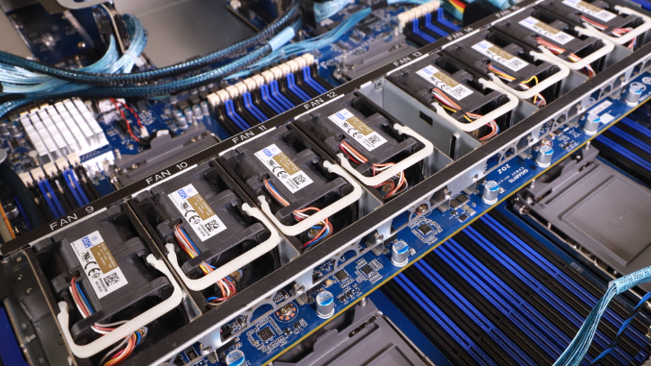AMD Ryzen wants to conquer the world, one server at a time
Gigabyte’s Giga Computing unleashes affordable 1U servers with Ryzen inside

AMD Ryzen-based web hosting services are now commonplace, so it is perhaps not too surprising therefore that given ECC support and high core count, another manufacturer has decided to go all in and launched entry-level Ryzen servers.
Giga Computing, a subsidiary of popular motherboard manufacturer Gigabyte, unleashed four of these new servers, all in 1U format with one shorter version for edge computing.
Of the quartet, the R133-C11 is the one which is most appealing because it can handle up to eight SATA drives (a mix of 2.5-inch and 3.5-inch ones) and has four LAN ports (two 10GbE and two 1GbE). It can accommodate Ryzen “Zen 4” CPUs with a TDP of up to 170W which includes the top of the range AMD Ryzen 9 7950X with its 16-cores, 32-threads and integrated graphics.
Power up
There’s a bunch of Xeon server processors with 16 cores, including four launched in this quarter (excluding the W series for workstation). But none can match the 7950X’s base clock speed (4.5GHz), L3 cache (64MB) or price (less than $600). Where Intel still has the upper hand is on RAM support (up to 4TB), dual-CPU support and a bunch of Intel-only features.
Gigabyte sees the Ryzen 7000 series as being used in workspaces, telecommunications cabinets and dedicated hosting scenarios. Since it is a server, it has a baseboard management controller (BMC) for remote monitoring and management (RMM)/Intelligent Platform Management Interface (IPMI) plus redundant 800W PSUs and Gigabyte’s full stack of server management software.
It has two PCIe slots, one a Gen5 x16 and the other Gen4 x4, plus one M.2 slot (PCIe 4.0) for a compatible SSD. Other than the three USB ports, Gigabyte saw fit to use a miniDP video connector, which puzzles us to say the least. HDMI would have been a much better option here as it is a more widely accepted connector and you can always use a spare TV as a backup monitor.
Ryzen to rule the roost?
I already explained why I believe AMD should let go of the Threadripper brand completely and perhaps rename it to Ryzen Pro instead. Consumer-grade Ryzen processors are powerful enough now to take on new, professional, use cases thanks to ECC support, higher core count, clock speeds and wider availability.
Are you a pro? Subscribe to our newsletter
Sign up to the TechRadar Pro newsletter to get all the top news, opinion, features and guidance your business needs to succeed!
AMD has a couple of 16-core EPYC processors but their support for much larger memory (12 slots), more PCIe lanes and two CPUs make them fit for different workloads that Ryzen SKUs simply can’t touch.
I expect other manufacturers to follow suit and launch more Ryzen-based server and workstation products in the coming months. Asrock is another manufacturer that has seen a gap in the market and launched several products over the past two years.
Oh and do remember that there’s another chip, the Ryzen 9 7950X3D which can be plugged into these servers with a whopping 128MB of L3 cache thanks to its 3D V-cache technology. Some latency sensitive, specialist applications e.g. CFD and mechanical simulations like Ansys CFX, Fluent or Mechanical could see a significant performance bump on a budget.
- Here's our pick of the best bare metal hosting around

Désiré has been musing and writing about technology during a career spanning four decades. He dabbled in website builders and web hosting when DHTML and frames were in vogue and started narrating about the impact of technology on society just before the start of the Y2K hysteria at the turn of the last millennium.